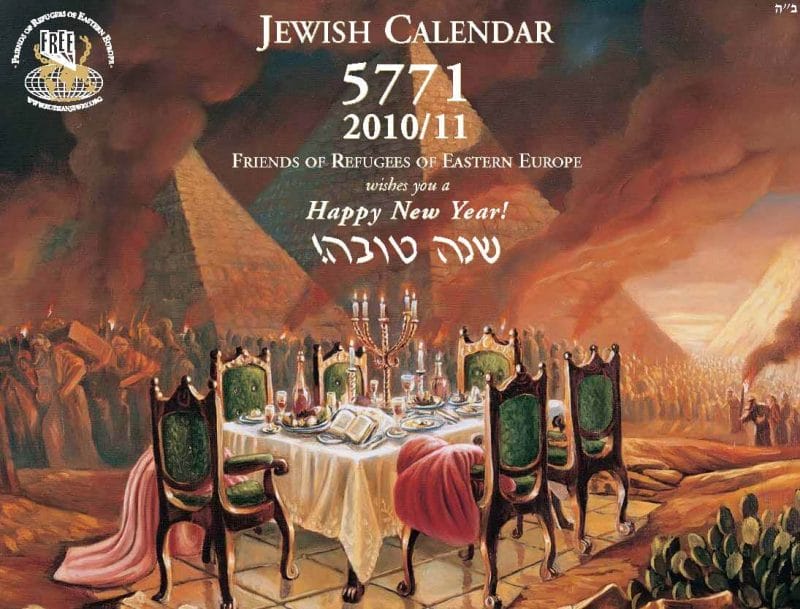Description
Among the paintings in the calendar are depictions of Rosh Hashana prayers by bearded hassidim covered with prayer shawls in fervent, heated expressions as well as the tranquil scene at the lake’s edge showing Tashlich, a Rosh Hashana ceremony in which pieces of bread representing sins are thrown into the flowing waters.
In other scenes we see hassidim outdoors in the winter snow blessing the New Moon on Carroll Street in Brooklyn’s Crown Heights, home of the Lubavitch-Chabad community. In another, Jewish adults and children are seen burning their bundles of hometz, leavened bread, before Passover. In a fifth, we view the scene of a hatunah, a wedding, where the groom and accompaniment are approaching the beautiful, modest young bride.
The cover of the calendar shows a 19th century “magical agolo,” a flying horse- drawn wagon in which 10 hassidim, a minyan (quoram for collective prayer), are being transported over shtetl homes to another Russian town engage in mitzvot, good deeds. The flying wagon was a dream or meditation of the holy Baal Shem Tov, promulgator of hassidism in the 18th century, and the scene was re-articulated by the Fourth Lubavitcher Rebbe, the Rebbe Maharash, as one that exemplifies that Jews must overcome all obstacles including traffic jams to reach the areas where people need them if they have to fly to get there.
Kleinman, who was born in Leningrad in 1933 and lived among Lubavitcher hassidim in Crown Heights and K’far Habad in Israel until his passing in 1995, is recognized as a master of both realistic and expressionistic art. His paintings portray the religious, communal life in which he lived. All of his canvas subjects are seen by critics as extraordinarily real and his works have been described as “joyous portraits between the individual and G-d.”
Only logged in customers who have purchased this product may leave a review.












Reviews
There are no reviews yet.